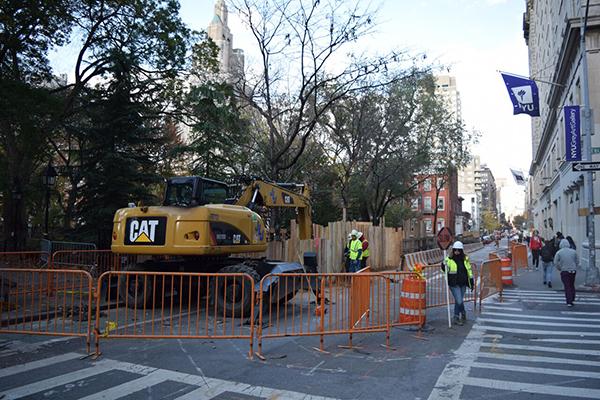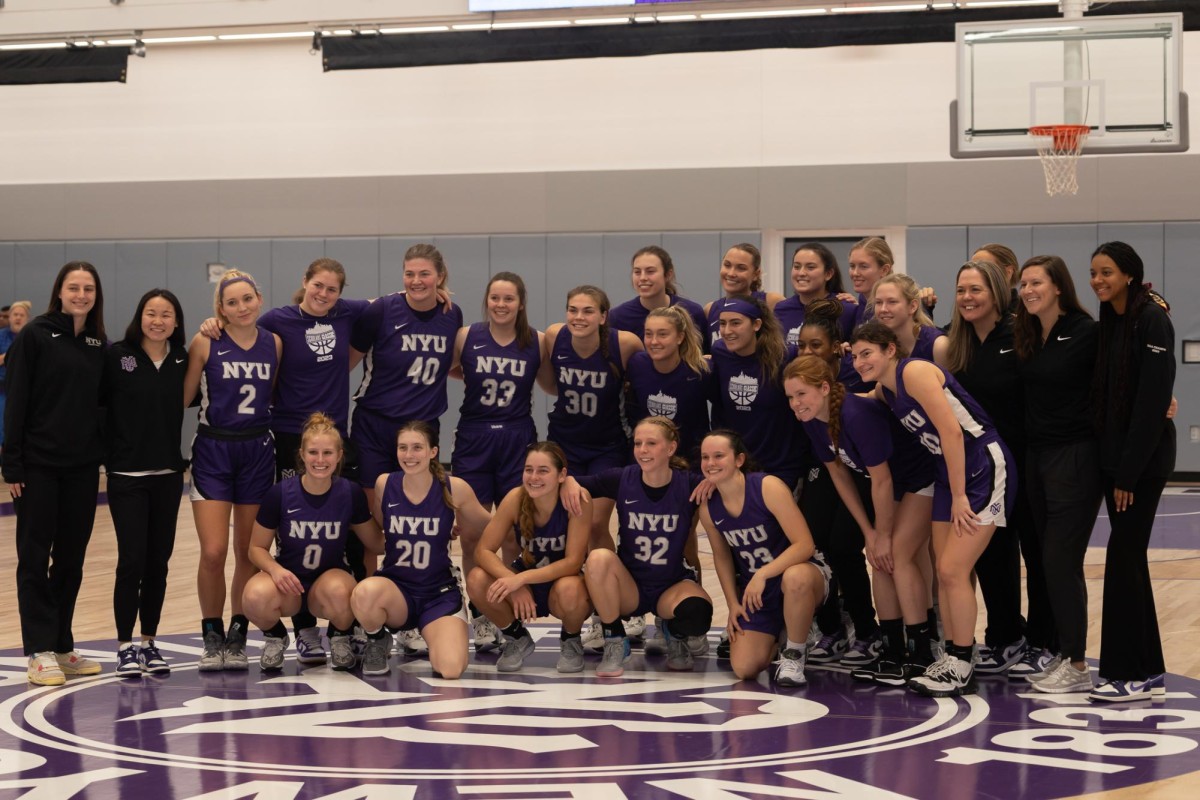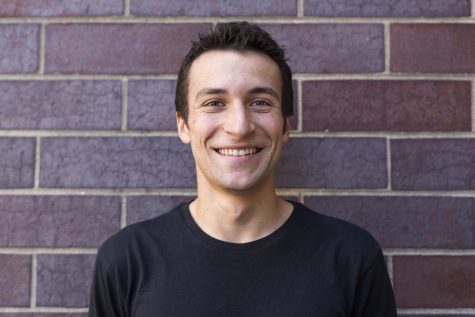Burial vault oversight revealed by professor, LS freshmen

An NYU class found that the New York Department of Design and Construction should have known that there were bodies buried at the site of construction.
November 16, 2015
While digging through troves of historical maps a couple weeks ago, NYU adjunct assistant professor JP Borum and their LS Writing I class came across an interesting discovery: the burial vault recently uncovered by the New York City Department of Design and Construction has been well-documented for nearly 200 years. Why then, Borum asked, did the DDC move forward with their project, knowing they would disrupt a known burial ground?
“They just dug a hole in the middle of our path to the park,” Borum said. “Did they think NYU wasn’t going to pay attention?”
Borum’s 26 students already look at maps, reports and statements in class, but now they are using these methods to dig deeper into the story.
“The biggest [goal] is to seek the truth: research and writing are tools we use to respond ethically to problems, big problems,” Borum said.
A 2005 report prepared by the New York City Department of Parks and Recreation identified the Second Presbyterian Church as the descendent church associated with all church burials in the park, recommending that the organization be contacted prior to any construction.
“Contact should be made prior to field investigations to ensure that any human remains that might be encountered from this antecedent congregation will be addressed appropriately,” the report reads.
Meanwhile, a story published in the New York Times on Nov. 6 talked to Alyssa Loorya — an archaeologist from Chrysalis Archaeological Consultants, the group being retained by the city to conduct the construction — who said the Second Presbyterian Church did not have records.
However, Leslie Merlin, a pastor at the Second Presbyterian Church, said the city never made any attempt to contact the organization — despite the recommendations put forth in the 2005 report.
“I am very sorry to say that no one contacted us at any point before or during this project,” Merlin said in an email. “That has distressed us, as has the erroneous statement regarding our records in the Times.”
Merlin conceded that the church could not confirm independently that their organization was a descendent of the Scotch Presbyterian Church.
The same 2005 report recommends that testing be done in areas of potential archaeological concern — of which the burial vault site is one. Surprisingly, a representative from Chrysalis admitted that nobody in New York City does archaeology prior to excavation and that they were fully aware of a 1965 Consolidated Edison discovery of skeletons in the exact same location.
Given that the DDC knew that they would run into the burial vault, Borum called the city’s decision to continue forth with the construction a “big oversight,” but is proud of the way the classes have reacted in the aftermath.
“We’re responding to this issue with the tools at hand that freshmen are learning in Social Foundations, in Cultural Foundations and in their writing class,” Borum said. “They’re responding with compassion and such integrity.”
At the time of publication, the DDC had not responded to requests for comment.
A version of this article appeared in the Nov. 16 print edition. Email Alex Bazeley at [email protected].













































































































































Joan Penrose-Borum • Nov 16, 2015 at 6:53 am
Interesting! Impressive how the students are involved in “hands on” historical research!